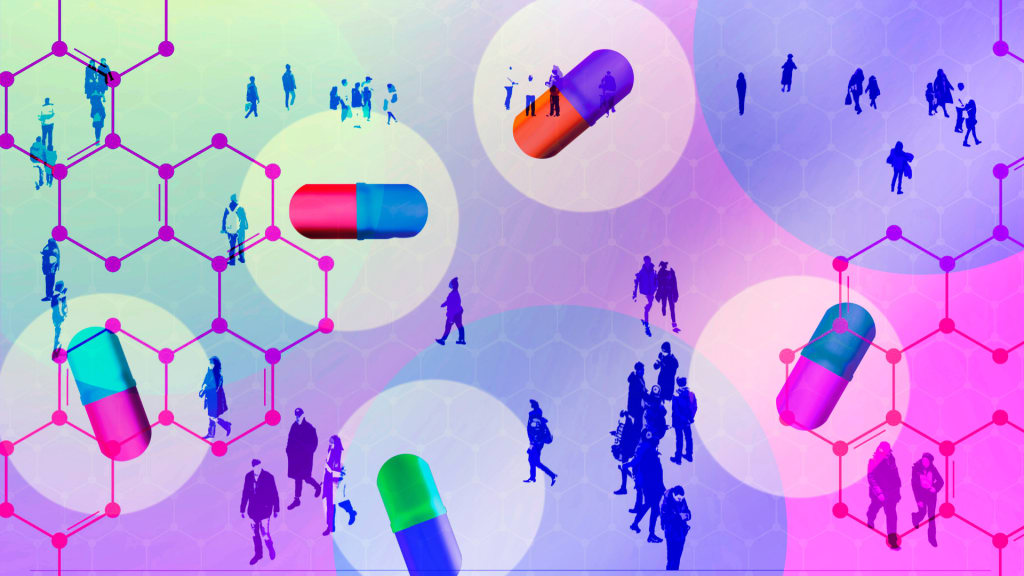
How MAHA and AI can transform public health
How did your country report this? Share your view in the comments.
Diverging Reports Breakdown
How MAHA and AI can transform public health
The FDA’s decision to phase out these additives represents a meaningful shift toward a safer, more transparent food system. Over half of U.S. states are introducing legislation to address synthetic dyes. AI can analyze vast datasets spanning dietary habits, genetic predispositions, and environmental exposures. It can also create highly personalized plans and virtual coaches to help individuals reach their health goals. The White House Office of Science and Technology Policy, Michael Kratsios, can partner with Silicon Valley leaders to set new standards for AI-driven health policy. The real test for all of us, including MAHA, is whether we have the real action to take real action on the removal of food dyes from our food supply. We are living through a rare window of possibility through the use of AI, and we are living in a time when it is possible to make a real difference in the lives of millions of Americans. The MAHA Commission has set the stage for a new era in health policy, and artificial intelligence can serve as a pivotal force in accelerating its impact.
advertisement
Recent developments surrounding the regulation of synthetic food dyes signal a major milestone in American health policy. We are witnessing the first serious crack in the armor of the U.S. food industry. For decades, tens of millions of Americans have unknowingly consumed potentially harmful chemicals such as Yellow 5 and Red 40, dyes already restricted in Europe. The FDA’s decision to phase out these additives represents a meaningful shift toward a safer, more transparent food system. This is a critical and positive step forward: Food should nourish, not harm. As someone deeply committed to advancing health outcomes, I view this as a welcome and necessary correction. Don’t politicize health While MAHA and U.S. Health and Human Services Secretary Robert F. Kennedy, Jr. (RFK) have drawn both support and criticism, my focus remains clear: How do we improve health? On that front, I support any movement taking tangible steps to make our food supply healthier and more accountable.
Subscribe to the Daily newsletter. Fast Company’s trending stories delivered to you every day Privacy Policy | Fast Company Newsletters
Historically, public health recommendations have been one-size-fits-all, often failing to address the individual metabolic and lifestyle factors that shape personal health outcomes. MAHA has the potential to change this paradigm by embracing AI-driven personalized medicine. AI can analyze vast datasets spanning dietary habits, genetic predispositions, and environmental exposures to generate tailored health recommendations that empower individuals to make optimal nutritional choices. I am opposed to the politicization of American health. It disproportionately harms the most vulnerable, particularly low-income communities, who already face significant barriers to accessing nutritious food. My focus is metabolic health, and our most urgent challenge is what’s on our plates. The fact that more than 10,000 chemicals are permitted in the U.S. food supply, while only about 400 are allowed in Europe, is indefensible. This is not just a regulatory gap; it is a public health failure that must be addressed. No one has successfully challenged the U.S. food industry until now. Some states are proposing or adopting changes aligned with MAHA such as soda bans, dye eliminations, and ultra-processed food limits in schools, and some corporations like PepsiCo are eliminating food dyes from its products. Over half of U.S. states are introducing legislation to address synthetic dyes. With MAHA’s clear intentions, any company that wants its food served in America’s largest restaurant chain (i.e. American school cafeterias), is asking themselves how they can realistically get dyes out of their foods.
AI can help It is now widely acknowledged that diet plays a fundamental role in chronic conditions such as diabetes, cardiovascular disease, and obesity, which affect 133 million Americans. Despite this awareness, progress in addressing these issues has been slow. In addition to the important steps of improving school lunches and banning potentially harmful chemicals from foods, AI-powered tools can also be incorporated into preventive care in programs like Medicare wellness visits, SNAP (Supplemental Nutrition Assistance Program), school health education, and veteran services. AI tools can provide real-time insights into the metabolic effects of foods before consumption, enabling individuals to make healthier choices based on their unique health profiles. They can also create highly personalized plans and virtual coaches to help individuals reach their health goals. For AI to fulfill its potential, it must be fueled by centralized, comprehensive health data. A unified data repository that aggregates nutritional information, health metrics, and environmental factors across diverse communities is essential. This centralized approach enhances the accuracy and responsiveness of AI algorithms, ensuring that health recommendations evolve in tandem with emerging scientific research.
Realizing this vision will require close collaboration between government agencies, private-sector innovators, and healthcare and technology experts. The White House Office of Science and Technology Policy, especially under leaders like Michael Kratsios, can partner with Silicon Valley’s AI leaders to set new standards for data-driven health policy. Together, we can ensure AI-driven insights are accessible to all Americans. We are living through a rare window of possibility. As RFK Jr. and MAHA work to improve our food system and as AI becomes a force multiplier for health equity, we have the tools to take real action. The removal of food dyes is only the beginning. The real test for all of us, including MAHA, is whether we can also address the larger crises of ultra-processed food, excess sugar, and nutritional inequality. The future of public health depends not on ideological battles, but on constructive action. Let’s focus on what matters: addressing the root cause, rather than just treating chronic disease, and improving the health span of all Americans.
Noosheen Hashemi is founder of January AI.
Source: https://www.fastcompany.com/91353643/how-maha-and-ai-can-transform-public-health
